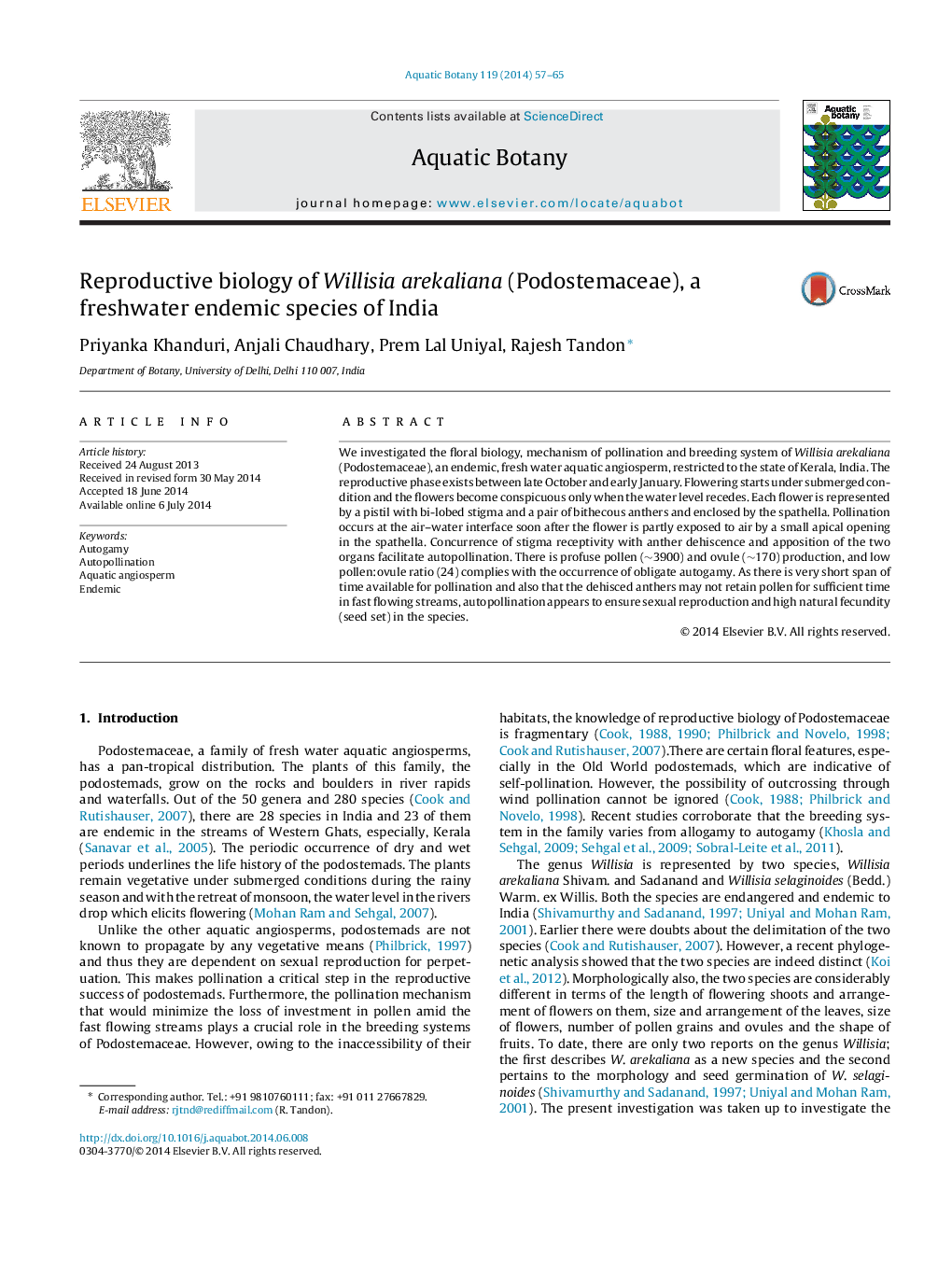| Article ID | Journal | Published Year | Pages | File Type |
|---|---|---|---|---|
| 4527758 | Aquatic Botany | 2014 | 9 Pages |
•Reproductive strategy of Willisia arekaliana (Podostemaceae) was investigated.•The species undergoes autopollination and is self-compatible.•Pollination occurs soon after the flowers reach partly above the water level.•Pistil and anthers are juxtaposed at maturity which facilitates autogamy.
We investigated the floral biology, mechanism of pollination and breeding system of Willisia arekaliana (Podostemaceae), an endemic, fresh water aquatic angiosperm, restricted to the state of Kerala, India. The reproductive phase exists between late October and early January. Flowering starts under submerged condition and the flowers become conspicuous only when the water level recedes. Each flower is represented by a pistil with bi-lobed stigma and a pair of bithecous anthers and enclosed by the spathella. Pollination occurs at the air–water interface soon after the flower is partly exposed to air by a small apical opening in the spathella. Concurrence of stigma receptivity with anther dehiscence and apposition of the two organs facilitate autopollination. There is profuse pollen (∼3900) and ovule (∼170) production, and low pollen:ovule ratio (24) complies with the occurrence of obligate autogamy. As there is very short span of time available for pollination and also that the dehisced anthers may not retain pollen for sufficient time in fast flowing streams, autopollination appears to ensure sexual reproduction and high natural fecundity (seed set) in the species.
